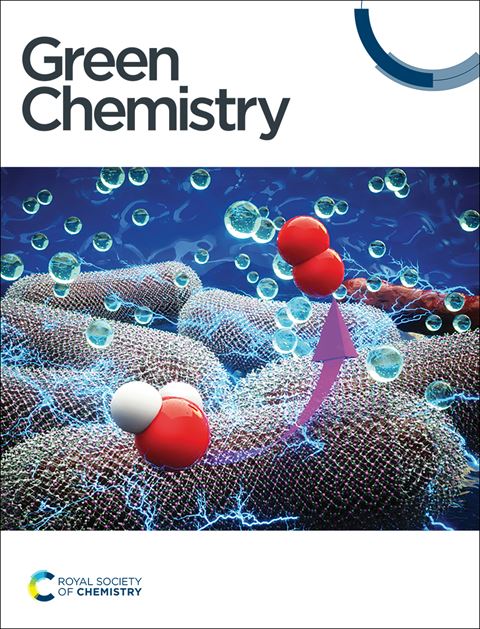Electrolyte pH modulation for efficient and durable electrochemical cement clinker precursor production†
IF 9.3
1区 化学
Q1 CHEMISTRY, MULTIDISCIPLINARY
引用次数: 0
Abstract
Cement production is carbon intensive and accounts for 7–8% of global CO2 emissions. Deep cement decarbonization can be achieved if limestone calcination is replaced with an ambient-temperature electrochemical process. A big challenge of this process is the significant deposition of the Ca(OH)2 product on the membrane, causing unacceptable operational durability and energy efficiency. To address this issue, we designed a two-chamber membrane-based cement clinker precursor electrolyzer. The electrolyte pH modulation and its effect on decarbonization, precipitation, and cell voltage are investigated. We reveal a thin Ca(OH)2 layer on the anode side of the membrane under fast decarbonization kinetics (99% current efficiency) at a pH of 5.1, increasing the cell voltage by 50%. A periodic pH change using intermittent stirring ensures a relatively constant voltage level with a sacrifice of ∼3% decarbonization efficiency. Membrane clogging is extremely significant in the cathode chamber due to the extreme pH environment (12.4), causing an inferior production rate of Ca(OH)2 (59% of the theoretical limit). Introducing Ca2+ into the catholyte leads to a much lower pH (11.8) and a clean membrane throughout the electrolysis, increasing the current efficiency for Ca(OH)2 production to 84%. Our work demonstrates a viable approach for efficient and durable production of electrochemical cement clinker precursors.

求助全文
约1分钟内获得全文
求助全文
来源期刊

Green Chemistry
化学-化学综合
CiteScore
16.10
自引率
7.10%
发文量
677
审稿时长
1.4 months
期刊介绍:
Green Chemistry is a journal that provides a unique forum for the publication of innovative research on the development of alternative green and sustainable technologies. The scope of Green Chemistry is based on the definition proposed by Anastas and Warner (Green Chemistry: Theory and Practice, P T Anastas and J C Warner, Oxford University Press, Oxford, 1998), which defines green chemistry as the utilisation of a set of principles that reduces or eliminates the use or generation of hazardous substances in the design, manufacture and application of chemical products. Green Chemistry aims to reduce the environmental impact of the chemical enterprise by developing a technology base that is inherently non-toxic to living things and the environment. The journal welcomes submissions on all aspects of research relating to this endeavor and publishes original and significant cutting-edge research that is likely to be of wide general appeal. For a work to be published, it must present a significant advance in green chemistry, including a comparison with existing methods and a demonstration of advantages over those methods.
 求助内容:
求助内容: 应助结果提醒方式:
应助结果提醒方式:


